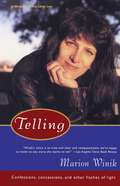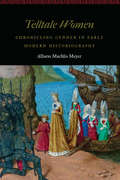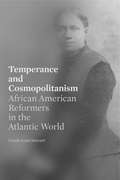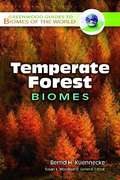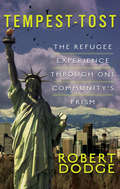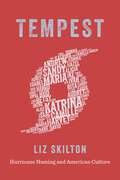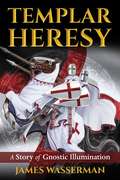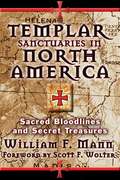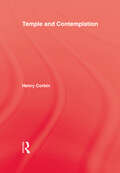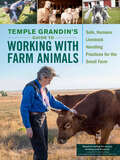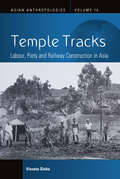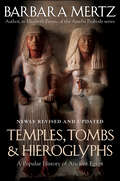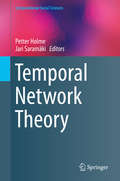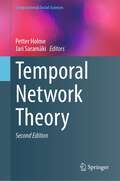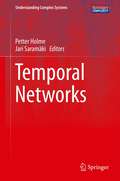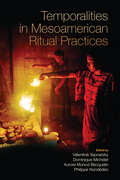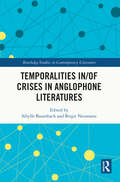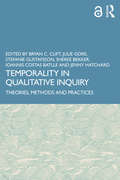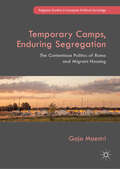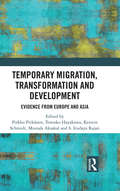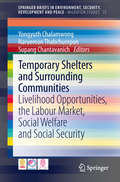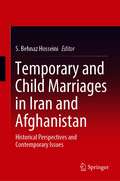- Table View
- List View
Telling: Confessions, Concessions, and Other Flashes of Light
by Marion WinikCombining the insight of Anna Quindlen and the comic storytelling of Garrison Keillor with her own singularly outrageous humor, Marion Winik has captivated thousands of listeners on NPR's All Things Considered. Now, in Telling, she takes us on a journey both personal and universal, a tour of the minefield of chance and circumstance that make up a life. Along the way, she offers razor-sharp takes on everything from adolescence in suburban New Jersey ("Yes, I wanted to be a wild teenage rebel, but I wanted to do it with my parents' blessing") to hellish houseguests and bad-news boyfriends; from the joys of breastfeeding in public to the sometimes-salvation of motherhood. Candid, passionate, and breathtakingly funny, Marion Winik maintains an unshaken belief that following one's heart is more important than following the rules -- and a conviction that the secrets we try to hide often contain the deepest truths. "A born iconoclast, an aspiring artiste, a feminist vegetarian prodigal daughter, from early youth I considered myself destined to lead a startling life far outside the bounds of convention. I would be famous, dangerous, brilliant and relentlessly cool: a sort of cross between Emma Goldman, Jack Kerouac, and Georgia O'Keeffe. . . . So where did this station wagon come from?"
Telltale Women: Chronicling Gender in Early Modern Historiography (Women and Gender in the Early Modern World)
by Allison Machlis MeyerTelltale Women fundamentally reimagines the relationship between the history play and its source material as an intertextual one, presenting evidence for a new narrative about how—and why—these genres disparately chronicle the histories of royal women. Allison Machlis Meyer challenges established perceptions of source study, historiography, and the staging of gender politics in well-known drama by arguing that chronicles and political histories frequently value women&’s political interventions and use narrative techniques to invest their voices with authority. Dramatists who used these sources for their history plays thus encountered a historical record that offered surprisingly ample precedents for depicting women&’s perspectives and political influence as legitimate, and writers for the commercial theater grappled with such precedents by reshaping source material to create stage representations of royal women that condemned queenship and female power. By tracing how the sanctioning of women&’s political participation changes from the narrative page to the dramatic stage, Meyer demonstrates that gender politics in both canonical and noncanonical history plays emerge from playwrights&’ intertextual engagements with a rich alternative view of women in the narrative historiography of the sixteenth and seventeenth centuries.
Temperance and Cosmopolitanism: African American Reformers in the Atlantic World (Africana Religions #1)
by Carole Lynn StewartTemperance and Cosmopolitanism explores the nature and meaning of cosmopolitan freedom in the nineteenth century through a study of selected African American authors and reformers: William Wells Brown, Martin Delany, George Moses Horton, Frances E. W. Harper, and Amanda Berry Smith. Their voluntary travels, a reversal of the involuntary movement of enslavement, form the basis for a critical mode of cosmopolitan freedom rooted in temperance. Both before and after the Civil War, white Americans often associated alcohol and drugs with blackness and enslavement. Carole Lynn Stewart traces how African American reformers mobilized the discourses of cosmopolitanism and restraint to expand the meaning of freedom—a freedom that draws on themes of abolitionism and temperance not only as principles and practices for the inner life but simultaneously as the ordering structures for forms of culture and society. While investigating traditional meanings of temperance consistent with the ethos of the Protestant work ethic, Enlightenment rationality, or asceticism, Stewart shows how temperance informed the founding of diasporic communities and civil societies to heal those who had been affected by the pursuit of excess in the transatlantic slave trade and the individualist pursuit of happiness. By elucidating the concept of the “black Atlantic” through the lenses of literary reformers, Temperance and Cosmopolitanism challenges the narrative of Atlantic history, empire, and European elite cosmopolitanism. Its interdisciplinary approach will be of particular value to scholars of African American literature and history as well as scholars of nineteenth-century cultural, political, and religious studies.
Temperance and Cosmopolitanism: African American Reformers in the Atlantic World (Africana Religions)
by Carole Lynn StewartTemperance and Cosmopolitanism explores the nature and meaning of cosmopolitan freedom in the nineteenth century through a study of selected African American authors and reformers: William Wells Brown, Martin Delany, George Moses Horton, Frances E. W. Harper, and Amanda Berry Smith. Their voluntary travels, a reversal of the involuntary movement of enslavement, form the basis for a critical mode of cosmopolitan freedom rooted in temperance. Both before and after the Civil War, white Americans often associated alcohol and drugs with blackness and enslavement. Carole Lynn Stewart traces how African American reformers mobilized the discourses of cosmopolitanism and restraint to expand the meaning of freedom—a freedom that draws on themes of abolitionism and temperance not only as principles and practices for the inner life but simultaneously as the ordering structures for forms of culture and society. While investigating traditional meanings of temperance consistent with the ethos of the Protestant work ethic, Enlightenment rationality, or asceticism, Stewart shows how temperance informed the founding of diasporic communities and civil societies to heal those who had been affected by the pursuit of excess in the transatlantic slave trade and the individualist pursuit of happiness. By elucidating the concept of the “black Atlantic” through the lenses of literary reformers, Temperance and Cosmopolitanism challenges the narrative of Atlantic history, empire, and European elite cosmopolitanism. Its interdisciplinary approach will be of particular value to scholars of African American literature and history as well as scholars of nineteenth-century cultural, political, and religious studies.
Temperate Forest Biomes (Greenwood Guides to Biomes of the World)
by Bernd H. KuenneckeThe tropical forests my provide much of our oxygen world-wide, but the temperate forests sustain us, and here Kuennecke (Radford U.) takes a very close look at temperate forest biomes, temperate broadleaf deciduous forests, Mediterranean woodlands and stands of scrub in a temperate environment. Focusing on a range of temperate forest biomes, he gives a general overview at a global scale and analyzes specific biomes in detail, so much so that chapters can stand on their own. He keeps undergraduates in mind, using a minimum of scientific jargon but respecting that which is needed, and organizes chapters geographically to cover virtually every temperate biome. He notes that all biomes overlap to some degree and explains the phenomenon, and also pays attention to the effects of climate and climate change. Annotation ©2009 Book News, Inc., Portland, OR (booknews.com)
Tempest-Tost: The Refugee Experience Through One Community's Prism
by Robert Dodge&“Dodge takes us behind the headlines and introduces real people and their very real struggles yearning to breathe free. Page-turning [and] proactive.&” —Craig McGuire, author of Brooklyn&’s Most Wanted Kahassai fled the Ethiopian Red Terror that killed his father and hundreds of thousands of others, trekking through a snake-infested jungle while hyenas followed him at night. Georgette crossed the Congo while the Hutus and Tutsis struggled for control as millions of defenseless people were murdered and displaced. Asmi and Leela were children in Bhutan when soldiers burned their villages and drove out the Nepalese-speaking Hindus. Roy narrowly escaped Afghanistan after the Americans began bombing Kabul to drive out the Taliban. Mahn made it out of Vietnam only after his twenty-second attempt. Mohammed survived daily beatings when imprisoned in Syria, though many of his fellow prisoners died. What do these people have in common beyond tales of horror and hardship that caused them to flee their countries, leaving their homes, families, and previous lives behind? They all found a new place to live in Denver, Colorado, the &“Queen City of the Plains.&” In this timely and important book, author Robert Dodge describes the circumstances that caused these refugees to flee their homes and shares their experiences after they arrived in Denver. This is the refugee story behind the headlines and political posturing. This is what coming to America has meant to those displaced, as represented by various refugee communities that over the years have come to think of Denver, Colorado as home.
Tempest: Hurricane Naming and American Culture (The Natural World of the Gulf South)
by Liz SkiltonLiz Skilton’s innovative study tracks the naming of hurricanes over six decades, exploring the interplay between naming practice and wider American culture. In 1953, the U.S. Weather Bureau adopted female names to identify hurricanes and other tropical storms. Within two years, that convention came into question, and by 1978 a new system was introduced, including alternating male and female names in a pattern that continues today. In Tempest: Hurricane Naming and American Culture, Skilton blends gender studies with environmental history to analyze this often controversial tradition. Focusing on the Gulf South—the nation’s “hurricane coast”—Skilton closely examines select storms, including Betsy, Camille, Andrew, Katrina, and Harvey, while referencing dozens of others. Through print and online media sources, government reports, scientific data, and ephemera, she reveals how language and images portray hurricanes as gendered objects: masculine-named storms are generally characterized as stronger and more serious, while feminine-named storms are described as “unladylike” and in need of taming. Further, Skilton shows how the hypersexualized rhetoric surrounding Katrina and Sandy and the effeminate depictions of Georges represent evolving methods to define and explain extreme weather events. As she chronicles the evolution of gendered storm naming in the United States, Skilton delves into many other aspects of hurricane history. She describes attempts at scientific control of storms through hurricane seeding during the Cold War arms race of the 1950s and relates how Roxcy Bolton, a member of the National Organization for Women, led the crusade against feminizing hurricanes from her home in Miami near the National Hurricane Center in the 1970s. Skilton also discusses the skyrocketing interest in extreme weather events that accompanied the introduction of 24-hour news coverage of storms, as well as the impact of social media networks on Americans’ tracking and understanding of hurricanes and other disasters. The debate over hurricane naming continues, as Skilton demonstrates, and many Americans question the merit and purpose of the gendered naming system. What is clear is that hurricane names matter, and that they fundamentally shape our impressions of storms, for good and bad.
Templar Heresy: A Story of Gnostic Illumination
by James Wasserman Harvey Rochman Keith StumpA tale of initiation, adventure, and romance set within the medieval Crusades• Shares in novel form the mystical rituals and techniques of the Nizari Ismailis (the legendary Assassins) communicated to selected Knights Templar during the Crusades• Shows how the Gnostic traditions of the Cathars and Nizaris were blended to become the core of the “heretical” doctrines for which the Templars were later condemned• Sheds light on the contemporary conflict between Islam and the West and offers a natural path of reconciliation between these disparate culturesSet within the dramatic tableau of the medieval Crusades, this story of initiation, adventure, and romance follows members of the Knights Templar and Assassins as they discover a mystical tradition with the potential to unify, protect, and liberate humankind--the very heresy for which the Knights Templar were later condemned.The tale begins with a young Persian student, Sinan, as he witnesses his teacher deliver the heretical Qiyama proclamation, seeking to abolish Islamic religious law in favor of a more mystical approach to spirituality. After completing his initiation into the revolutionary doctrines and practices of the Assassins--also known as the Nizari Ismailis or Hashishim--Sinan is appointed head of the Nizaris in Syria. Years later, after Sinan has become a wise and respected leader, he encounters Roland de Provence, a young member of the Knights Templar. Impressed by his courage and intelligence, Sinan selects him for initiation into the Nizari tradition. As readers follow Sinan and Roland through the process, they experience firsthand the transmission of these secret teachings and the paranormal, even magical powers of the Assassin adepts. Roland braves hashish journeys, mystical rituals, and divine epiphanies, as well as sexual awakening at the hands of Sinan’s beautiful consort Aisha. When Roland completes his education with Sinan, he vows to share the Nizari teachings with his fellow Templars. However, he is met with strong opposition from his Templar commander, and factions within the Order quickly arise. As we follow Roland to southern France, we witness how he blends the Cathar and Nizari traditions to form the core of the “heresy” for which the Templars were later arrested and condemned. Now an outlaw, hunted by his Templar brethren, Roland is forced to choose between the beliefs with which he was raised and the realizations of his own personal truths.Bringing to life the historical truths of his expertly researched bestseller The Templars and the Assassins, James Wasserman artfully traces the evolution of the Western Esoteric Tradition during the fertile cultural interactions of the Crusades. His story also sheds light on the modern conflict between Islam and the West--which began a thousand years ago--and offers a natural path of reconciliation between our disparate cultures.
Templar Sanctuaries in North America: Sacred Bloodlines and Secret Treasures
by William F. Mann Scott F. WolterTraces the movement of the Templars’ secret treasure across North America to where it still resides, protected by a sacred lineage of guardians• Explains how the Templars found refuge with Native American tribes, intermarrying with the Natives to continue the Holy Bloodline and further the lineage of guardians needed to protect their treasure and secrets• Reveals new evidence for the existence of Templar settlements and monuments across North America and how these reactivate the continent’s sacred rose lines• Pinpoints the exact location of the Templar/Holy Bloodline treasureMany have searched for the lost treasure of the Knights Templar, most famously at Oak Island. But what if the treasure wasn’t lost? What if this treasure--necessary to sanctify the Temple of Solomon and create a New Jerusalem--was moved through the centuries and protected by a sacred lineage of guardians, descendants of Prince Henry Sinclair and the Native American tribes who helped him?Drawing on his access as Grand Archivist of the Knights Templar of Canada and his own role as a descendant of both Sinclair and the Anishinabe/Algonquin tribe, William Mann examines new evidence of the Knights Templar in the New World long before Columbus and their mission to protect the Holy Bloodline of Jesus and Mary Magdalene. He reveals the secret settlements they built as they moved westward across the vast wilderness of North America, evading the European Church and Royal Houses. He explains how the Templars found refuge in the Sacred Medicine Lodges of the Algonquins, whose ceremonies and rituals bear striking resemblance to the initiations of Freemasonry. He reveals the strategic intermarriages that took place between the Natives and the Templars, furthering the Holy Bloodline and continuing the lineage of blood-guardians. The author explores how Sinclair’s journey from Nova Scotia across America also served to reactivate the sacred rose lines of North America through the building of “rose castles” and monuments, including the Newport Tower and the Kensington Rune Stone. Pinpointing the exact location of the Templar treasure still hidden in North America, the author also reveals the search for Templar sanctuaries to be the chief motivation behind the Lewis and Clark expedition and the murder of Meriwether Lewis.
Temple & Contemplation
by CorbinFirst published in 1986. Routledge is an imprint of Taylor & Francis, an informa company.
Temple Grandin's Guide to Working with Farm Animals: Safe, Humane Livestock Handling Practices for the Small Farm
by Temple GrandinAward-winning author Temple Grandin is famous for her groundbreaking approach to decoding animal behavior. Now she extends her expert guidance to small-scale farming operations. Grandin&’s fascinating explanations of how herd animals think — describing their senses, fears, instincts, and memories — and how to analyze their behavior, will help you handle your livestock more safely and effectively. You&’ll learn to become a skilled observer of animal movement and behavior, and detailed illustrations will help you set up simple and efficient facilities for managing a small herd of 3 to 25 cattle or pigs, or 5 to 100 goats or sheep.
Temple Tracks: Labour, Piety and Railway Construction in Asia (Asian Anthropologies #16)
by Vineeta SinhaThe notions of labour, mobility and piety have a complex and intertwined relationship. Using ethnographic methods and a historical perspective, Temple Tracks critically outlines the interlink of railway construction in colonial and post-colonial Asia, as well as the anthropology of infrastructure and transnational mobilities with religion. In Malaysia and Singapore, evidence of religion-making and railway-building from a colonial past is visible in multiple modes and media as memories, recollections and ‘traces’.
Temples, Tombs, & Hieroglyphs: A Popular History of Ancient Egypt
by Barbara MertzWorld-renowned Egyptologist Barbara Mertz explores the reality behind the bestselling fiction she writes (as Elizabeth Peters) and casts a dazzling light on a remarkable civilization.Afascinating chronicle of an extraordinary people—from the first Stone Age settlements through the reign of Cleopatra and the Roman invasions—Temples, Tombs, and Hieroglyphs brings ancient Egypt to life as never before. Lavishly illustrated with pictures, maps, and photographs, it offers tantalizing glimpses into Egyptian society; amazing stories of the pharaohs and the rise and fall of great dynasties; a sampling of culture, religion, and folklore; stories of explorers, scientists, and scoundrels who sought to unravel or exploit the ageless mysteries; and new insights into the architectural wonders that were raised along the banks of the Nile.
Temporal Identities and Security Policy in Postwar Japan (European Institute of Japanese Studies East Asian Economics and Business Series)
by Ulv HanssenThrough a discourse analysis of Japanese parliamentary debates, this book explores how different understandings of Japan’s history have led to sharply divergent security policies in the postwar period, whilst providing an explanation for the much-debated security policy changes under Abe Shinzō. Analyzing the ways identities can be constructed through ‘temporal othering,’ as well as ‘spatial othering,’ this book examines the rise of a new form of identity in Japan since the end of the Cold War, one that is differentiated not from prewar and wartime Japan, but from postwar Japan. The champions of this identity, it argues, see the postwar past as a shameful period, characterized by self-imposed military restrictions, and thus the relentless chipping away of these limitations in recent years is indicative of how dominant this identity has become. Exploring how these military restrictions have shifted from being a symbol of pride to a symbol of shame, this book demonstrates the concrete ways in which the past can both enable and constrain policy. Temporal Identities and Security Policy in Postwar Japan will be invaluable to students and scholars of Japanese politics and foreign policy, as well as international relations more generally.
Temporal Network Theory (Computational Social Sciences)
by Jari Saramäki Petter HolmeThis book focuses on the theoretical side of temporal network research and gives an overview of the state of the art in the field. Curated by two pioneers in the field who have helped to shape it, the book contains contributions from many leading researchers. Temporal networks fill the border area between network science and time-series analysis and are relevant for the modeling of epidemics, optimization of transportation and logistics, as well as understanding biological phenomena. Network theory has proven, over the past 20 years to be one of the most powerful tools for the study and analysis of complex systems. Temporal network theory is perhaps the most recent significant development in the field in recent years, with direct applications to many of the "big data" sets. This monograph will appeal to students, researchers and professionals alike interested in theory and temporal networks, a field that has grown tremendously over the last decade.
Temporal Network Theory (Computational Social Sciences)
by Jari Saramäki Petter HolmeThis book focuses on the theoretical side of temporal network research and gives an overview of the state of the art in the field. Curated by two pioneers in the field who have helped to shape it, the book contains contributions from many leading researchers. Temporal networks fill the border area between network science and time-series analysis and are relevant for epidemic modeling, optimization of transportation and logistics, as well as understanding biological phenomena. Over the past 20 years, network theory has proven to be one of the most powerful tools for studying and analyzing complex systems. Temporal network theory is perhaps the most recent significant development in the field in recent years, with direct applications to many of the “big data” sets. This book appeals to students, researchers, and professionals interested in theory and temporal networks—a field that has grown tremendously over the last decade. This second edition of Temporal Network Theory extends the first with three chapters highlighting recent developments in the interface with machine learning.
Temporal Networks
by Jari Saramäki Petter HolmeThe concept of temporal networks is an extension of complex networks as a modeling framework to include information on when interactions between nodes happen. Many studies of the last decade examine how the static network structure affect dynamic systems on the network. In this traditional approach the temporal aspects are pre-encoded in the dynamic system model. Temporal-network methods, on the other hand, lift the temporal information from the level of system dynamics to the mathematical representation of the contact network itself. This framework becomes particularly useful for cases where there is a lot of structure and heterogeneity both in the timings of interaction events and the network topology. The advantage compared to common static network approaches is the ability to design more accurate models in order to explain and predict large-scale dynamic phenomena (such as, e.g., epidemic outbreaks and other spreading phenomena). On the other hand, temporal network methods are mathematically and conceptually more challenging. This book is intended as a first introduction and state-of-the art overview of this rapidly emerging field.
Temporalities in Mesoamerican Ritual Practices
by Valentina Vapnarsky Dominique Michelet Philippe Nondédéo Aurore Monod BecquelinTemporalities in Mesoamerican Ritual Practices examines the time-based dimensions of ritual activities in past and present Mesoamerican societies, including the prehispanic, colonial, and modern periods. The authors explore ritual around three principal categories of action—creating, transforming, and destroying—as significant cultural manifestations of the temporal dimension of transition processes. Based on specific case studies, new analysis of fieldwork data, and long-term collaboration between authors, chapters engage empirically and theoretically with the multiple temporalities of ritual in relation to both the unfolding of ritual performance and its external and symbolic anchors. Taking rituals as a series of specific, formalized actions that produce transitory changes within an initial context, the authors examine activities that generate change linked to artifact production, life cycles, healing, conflict resolution, crisis management, the enthronement of rulers and transfers of responsibilities, and practices relating to the occupation, abandonment, reuse, or conversion of socialized spaces. Adopting a multidisciplinary approach in archaeology, ethnohistory, anthropology, and linguistic anthropology, Temporalities in Mesoamerican Ritual Practices offers new insights into ritual time approached through multi-semiotic, material, sensorial, and pragmatic perspectives that encourage further interdisciplinary dialogue.
Temporalities in/of Crises in Anglophone Literatures (Routledge Studies in Contemporary Literature)
by Sibylle Baumbach Birgit NeumannLiterary works play a crucial role in modelling and conceptualising temporalities. This becomes particularly apparent in times of crises, which put conventionalised temporal patterns and routines under pressure. During crises, past, present, and future appear to collapse into each other and give way to temporal disjunction and rupture. Offering pluralised and context-sensitive approaches to temporalities in and of crises, this volume explores how literature’s engagement with crises suggests both the need for and possibility of rethinking ‘time’. The volume is committed to examining the affordances of specific genres and their potential in pointing beyond temporalities of crises to facilitate a sense of futurity. Individual essays are grounded in recent theories of temporality and literary form, which are related to novel advancements in ecocriticism, queer studies, affect theory, and postcolonial studies. The chapters cover a broad range of examples from different literary genres to reveal the knowledge of literature about temporalities in and of crises.
Temporalities in/of Crises in Anglophone Literatures (Routledge Studies in Contemporary Literature)
by Sibylle Baumbach Birgit NeumannLiterary works play a crucial role in modelling and conceptualising temporalities. This becomes particularly apparent in times of crises, which put conventionalised temporal patterns and routines under pressure. During crises, past, present, and future appear to collapse into each other and give way to temporal disjunction and rupture. Offering pluralised and context-sensitive approaches to temporalities in and of crises, this volume explores how literature’s engagement with crises suggests both the need for and possibility of rethinking ‘time’. The volume is committed to examining the affordances of specific genres and their potential in pointing beyond temporalities of crises to facilitate a sense of futurity. Individual essays are grounded in recent theories of temporality and literary form, which are related to novel advancements in ecocriticism, queer studies, affect theory, and postcolonial studies. The chapters cover a broad range of examples from different literary genres to reveal the knowledge of literature about temporalities in and of crises.
Temporality in Qualitative Inquiry: Theories, Methods and Practices
by Bryan C. Clift; Julie Gore; Stefanie Gustafsson; Sheree Bekker; Ioannis Costas Batlle; Jenny HatchardTemporality in Qualitative Inquiry explores the relationship between time and qualitative research and unpacks some of the conceptual, methodological, practical, and pragmatic areas of qualitative inquiry related to time and temporality. This book advances the understanding and re-evaluation of research practice by examining the passage of time, temporal feeling, and conceptualising of time/temporality in research practice with participants. It provides theoretical and practical insights into how to navigate the concepts of time and temporality in qualitative inquiry. With authors from across the globe and from an array of social sciences including cultural studies, education, health, management and business, psychology, sociology, and sport and exercise, the book explores theoretical, methodological, and practical discussions of time and temporality in order to unpack and elicit meaning and understanding. The editors champion the call for the existence of slow and quick qualitative methodologies and methods. As such, this book is suitable for graduate students and researchers interested in qualitative inquiry, and in disciplines such as education, health research, management, psychology, sociology, and communication studies.
Temporary Camps, Enduring Segregation: The Contentious Politics of Roma and Migrant Housing (Palgrave Studies in European Political Sociology)
by Gaja MaestriThis book interrogates the persistence of Roma and migrant segregation in camps in order to understand how the creation of temporary enclosures can lead to enduring marginalisation. Persistent temporariness has been widely acknowledged as a common aspect of these camps, yet it remains largely under-theorised. Gaja Maestri unpacks the notion of camp persistence to delineate its different regimes and to investigate contributing factors. In order to do so, she develops a comparison between Italy and France and offers a new theorisation of the camp as a site of contentious politics, where the interaction between governmental and non-governmental actors produces different temporal arrangements and forms of segregation. Temporary Camps, Enduring Segregation will be of interest to scholars of political sociology, European comparative politics, and urban geography, specifically to those in the field of camp studies, racial segregation, Romani studies, and urban social movements.
Temporary Migration, Transformation and Development: Evidence from Europe and Asia
by Pirkko Pitkänen S. Irudaya Rajan Mustafa Aksakal Kerstin Schmidt Tomoko HayakawaIn a world grappling with refugee crisis, political unrest and economies on the verge of collapse, temporary migration has become an increasingly common phenomenon. This volume presents a comprehensive picture of the transformative and development potential of temporary transnational migration in political, legal, economic, social and cultural aspects. This book: analyses how temporary migration is distinct from more permanent and circular forms of migration; brings together case studies from five Asian countries (China, India, the Philippines, Thailand and Turkey) and six European countries (Finland, Germany, Greece, Hungary, the Netherlands and Ukraine); is based on exhaustive interviews of over 800 migrants, returnees and migrants’ family members, along with about 300 field experts, politicians, authorities and actors in civil society; illustrates the diverse nature of temporary migration, the continuing globalisation of the labour market and the interrelated changes to immigration, integration and emigration policies on local, national and international scales. This volume will be indispensable to scholars and researchers of development studies, international politics, international relations, migration and diaspora studies, public policy, sociology and social anthropology. It will also be of importance to government think tanks and non-governmental organisations working in these areas.
Temporary Shelters and Surrounding Communities
by Supang Chantavanich Yongyuth Chalamwong Naruemon ThabchumponThis book is one of four volumes on a major empirical migration study by leading Thai migration specialists from Chulalongkorn University (Bangkok) for the United Nations Development Programme (UNDP). This volume reviews the livelihood opportunities for displaced persons in temporary shelters and in the surrounding communities. It explores labor-market conditions and provides recommendations for improving opportunities. The editors discuss the current policies of the Royal Thai Government towards displaced persons on restrictions for settlement that impede access to welfare, justice, education and health care. Service provision for displaced persons are identified here, as well as access to justice and other key services, including Thai services outside the settlements, and the potential for conflict with the local Thai population over resource allocation. Summarizing the results of a highly important research project this volume provides realistic policy recommendations for a durable solution for refugees at the borders. Policymakers from governments, international organizations and NGOs will benefit from its findings and conclusions.
Temporary and Child Marriages in Iran and Afghanistan: Historical Perspectives and Contemporary Issues
by S. Behnaz HosseiniThis book discusses the popularity of temporary and child marriages in Iran and Afghanistan and explores their historical background and the reasons why they still persist today. Further, it offers readers insights into the emotional and psychological violence that the women who have been subjected to these practices experience. The respective contributions address the persistence of these traditions, their ramifications for the wellbeing of women and the development of societies and human relations. Taken together, they offer an excellent academic tool for students, academics and researchers studying the anthropology and sociology of kinship, and family in the Middle East.
